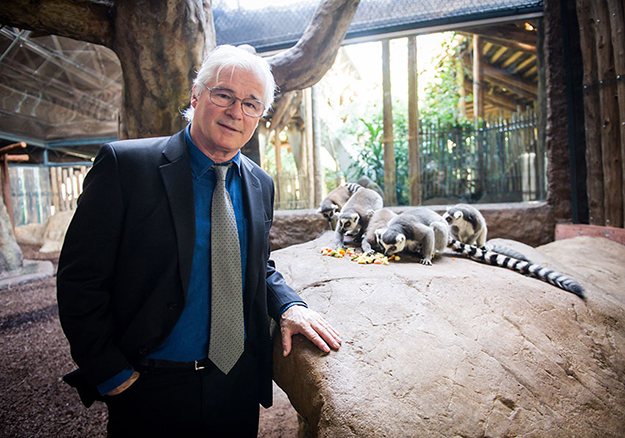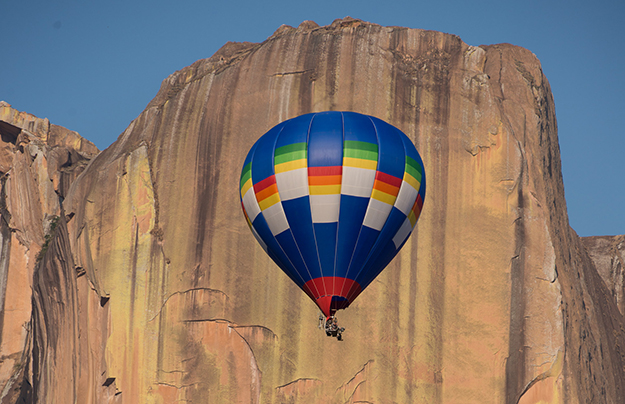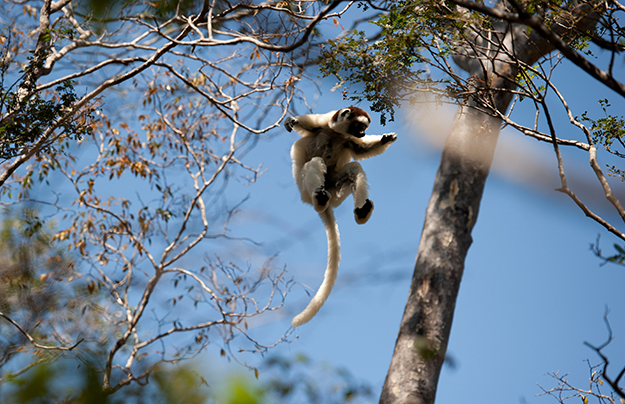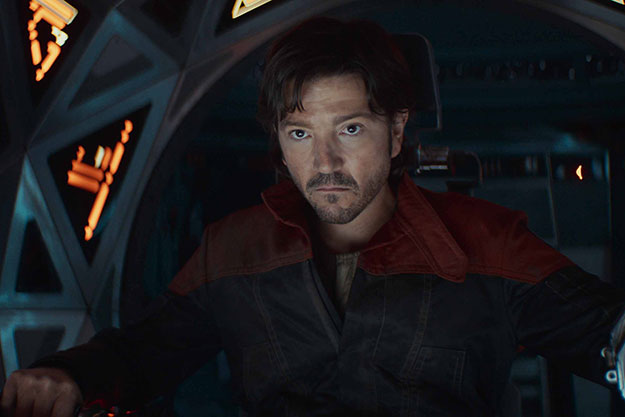Talking with Director David Douglas about IMAX ‘Island of Lemurs: Madagascar’
“It’s the end of a long curve. A film starts and you don’t know what it’s gonna be and then eventually you are afraid of what it’s gonna be,” shared director/cinematographer David Douglas with me at the beginning of our interview, last Friday March 28.
IMAX “Island of Lemurs: Madagascar” reunites Academy Winner Morgan Freeman with Drew Fellman, who also wrote and produced the 2011 IMAX 3D documentary “Born To Be Wild 3D” and David Douglas, who was the director of photography on that film.
The film tells the incredible true story of nature’s greatest explorers, the lemurs. Captured with IMAX 3D cameras, it takes audiences on a spectacular journey to the remote and wondrous world of Madagascar, where lemurs arrived millions of years ago as castaways. They have since evolved into hundreds of diverse species, but are now highly endangered. The film, also highlights the tireless efforts of trailblazing scientist Dr.Patricia C. Wright and her lifelong mission to help these strange and adorable creatures survive in the modern world.
It was beautifully shot, with an IMAX D3D camera, giving David Douglas the opportunity to transport the audience to the habitat of the lemurs in Madagascar. “When you have a medium like IMAX to work with, it drives you towards exploiting the thing that is best, and it’s to transport audiences to a new environment and give people a chance to see what lemurs habitat really looks like, because that’s the habitat that shape the lemurs and it’s talents,” said Douglas.
IMAX “Island of Lemurs: Madagascar” showcases the first ever aerials shot in IMAX 3D. And these aerial shots, were able to be done, thanks to a balloon from France called “cineball”, which permitted David to get close to the lemurs and film them on what they do best in their habitat, jumping from tree to tree. A strategy they wanted to do from the beginning. “Most of these days aerials are shot 2D, with that it's only a single eye, because there is really little 3D information and you are so far away from the forest that you don’t need the 3D. But the balloon let us be so close...that we really wanted to shoot on 3D aerials, to let people have that extra dimension of closeness to the tree tops,” explained Douglas. And not only that, according to Douglas, the benefit of using the cineball, was that since it’s quiet and not violent as a helicopter would be, it didn’t bother the lemurs. “Me, the operator and the 3D camera would float around through the forest. And since we are going very slowly, we didn’t make a lot of noise and the lemurs would just watch us, so we weren’t imposing ourselves on their habitat and it gives the audience a different way of watching in an aerial way,” he explained.
Getting to the locations in Madagascar, was a challenge for the crew, especially when they schedule to be at one place at certain time, but because of the terrain and obstacles, they would arrive on a different time than the one scheduled. “Getting to the locations was half the fun in Madagascar, because we are used to our ability to travel in the western world and we schedule we will be there at this time and then you will be there at that time. That doesn’t happen in Madagascar. In Madagascar, there is a limited number of airports, they have limited aircrafts and they have few roads. So all the things that we are used to move around with our equipment, are not necessarily available or at least not when we wanted, so making a schedule was difficult,” explained Douglas. “Then there is always the danger, that when we started to get somewhere, with our four, five trucks and other vehicles, with all our stuff and our people, if it suddenly started to rain, wherever you are when it started, that’s where you’ll stay because the trucks would sink,” he continued.
Douglas shared with us an anecdote that he had, when he was on his way to a location, “Drew, Dr. Patricia Wright and I, we were trying to get to this place called the “Tsingy” which are the stone formations shown in the movie. So we set up, for a four wheel drive on a trip that should have taken us only “4 hours”, it already was taking us more than that, so after 7 to 8 hours, we decided to abandon the vehicles and start walking to try to get to our location. And while we were walking towards a ferry, a huge storm was breaking, with all kinds of lighting and the only way to get across the river was with two canoes. When we finally got to the other side, we took shelter, while the storm was over, it was quite an adventure.”
When I watched the film in IMAX 3D it felt like the lemurs were right in front of me in a way that I wanted to touch to see if it’s real and I asked Douglas if he got really close to the lemurs when he was shooting them with his 3D camera. “While we are shooting it's one thing and being around them is another. Because with 3D, there is a challenge, there are some physical limits in 3D, you can be close to a subject, but you have to maintain enough distance that is comfortable for the audience and use the image and have a good 3D experience,” he explained.
When asked why the audience should go watch IMAX “Island of Lemurs: Madagascar” on April 4th, he said it's an experience that the families could have together. “This movie is an experience the families can have together, because everybody will be learning about this subject at the same time. There is very little knowledge in our culture about the lemurs and they are very interesting and spectacular animals, with a lot of character and are very entertaining to look at and learn from.”
IMAX Island of Lemurs: Madagascar in theatres April 4.
(Photo by George Pimentel/WireImage)















